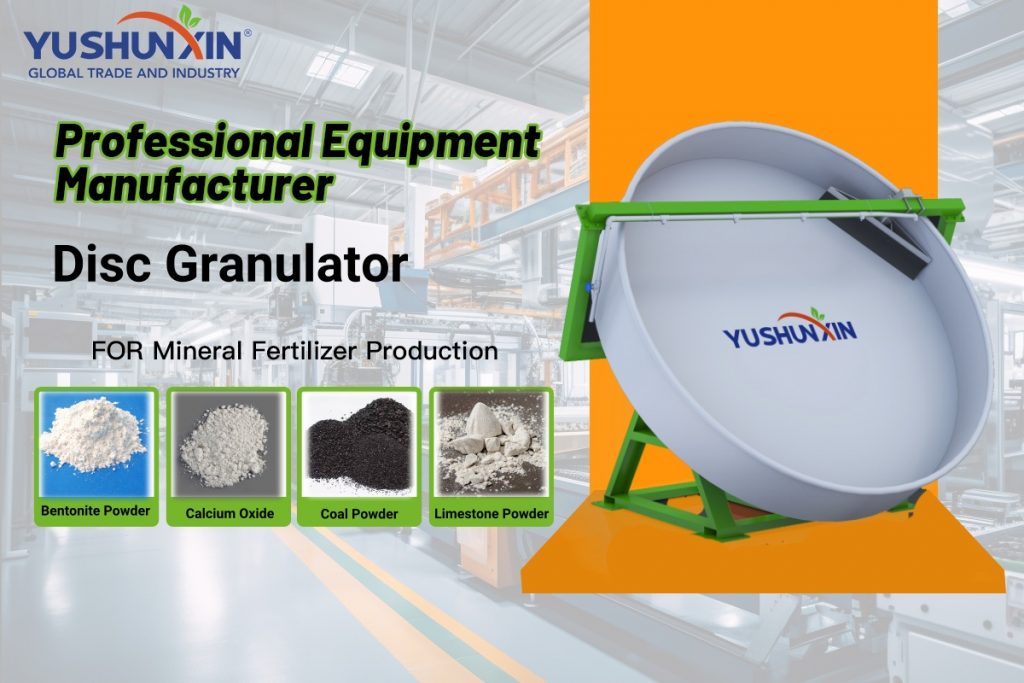Mineral fertilizer production requires reliable equipment and standardized processes because the quality of granules directly influences efficiency, safety, and industrial application value. In this context, disc granulation technology stands out as a core procedure in transforming raw mineral powder into uniform fertilizer particles. By understanding the raw materials used, the industrial needs behind their processing, and the role of disc granulators within the overall production line, industries can optimize both output and performance.
Which Raw Materials Are Suitable for Mineral Fertilizer Production?
Different minerals serve as the foundation of fertilizer manufacturing, and each raw material meets specific industrial requirements. Limestone powder functions as a stabilizing mineral and supports limestone fertilizer production solutions where uniform particle size improves spreading and blending results. Rock phosphate serves as the main source of phosphorus, and in rock phosphate fertilizer production, granulation ensures controlled release and higher utilization efficiency. Potash ore becomes an essential raw material in the manufacturing of NPK fertilizer, because the granulated particles integrate seamlessly into balanced formulations.
Mine waste by-products also provide valuable resources for mine waste management projects, where granulation converts fine mineral residues into recyclable particles. Each raw material requires not only granulation but also preparation steps such as crushing, screening, and proportioning. By addressing these material-specific needs, industries improve both resource efficiency and environmental sustainability.

Why Does the Fertilizer Industry Prefer Disc Granulators for Mineral Powder Processing?
Disc granulators, also called pan pelletizers or round plate granulating machines, play a central role in granule shaping. The rotating pan design allows fine control over particle size and moisture balance, which ensures that minerals such as phosphate rock, limestone, and potash ore form uniform pellets. This balance supports downstream handling, storage, and transportation while minimizing material waste.
Compared with other granulation machines, a pan granulator operates with flexible inclination adjustment, which allows precise control of granule diameter. Industries that process mineral fertilizers benefit from this because different application fields require specific particle sizes. For example, bulk fertilizer blending plants depend on uniform granules for accurate nutrient ratios, while mineral organic fertilizer production lines require stable particle structures to combine mineral and organic components.
How Do Supporting Machines Enhance the Disc Granulation Process?
A complete mineral fertilizer production line integrates multiple machines in addition to disc granulators. The ore fertilizer crusher machine, such as a jaw rock crusher or a raymond mill, reduces mineral ores into fine powder, which provides the necessary raw material for consistent granulation. After pelletizing, a rotary screening machine separates oversized or undersized particles, which ensures only qualified pellets move forward. In some cases, additional drying equipment stabilizes moisture content in order to improve storage conditions.
The combination of crushing, granulating, and screening machinery forms a continuous procedure. Each step prepares material for the next, and together they guarantee high-quality mineral fertilizer granules. This integrated approach not only improves granulation efficiency but also supports customized production lines such as NPK fertilizer manufacturing, phosphate fertilizer preparation, or limestone fertilizer solutions.
What Overall Benefits Does Disc Granulation Provide for Mineral Fertilizer Manufacturing?
When industries adopt disc granulation, they gain consistent particle formation, higher utilization of mined minerals, and reduced dust pollution during handling. The process turns fine mineral powders into mechanically strong pellets that resist breakage, which reduces losses during packaging and transportation. In addition, the modular design of pan granulators allows easy integration with crushers, screening systems, and blending equipment, which increases adaptability across different fertilizer production lines.
Therefore, disc granulation plays a decisive role not only in shaping mineral powders into usable fertilizer pellets but also in connecting upstream ore processing with downstream fertilizer applications. With the support of professional fertilizer equipment manufacturers such as Yushunxin, industries can implement advanced disc granulation machines together with complete mineral fertilizer production solutions, ensuring stable performance and long-term benefits. You can visit: https://www.mineralfertilizerproductionsolutions.com/product/disc-granulator-machine/
No Responses